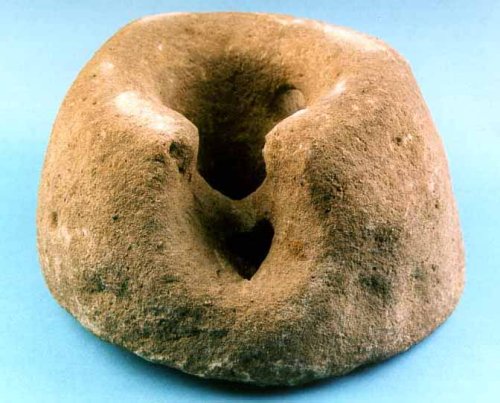|
|
Upper Quernstone from Summertown, Oxford: 1st century AD |

Rotary querns of this design for grinding corn into flour were already in use at the start of the Roman period. The rounded upper stone sat on a flat lower stone and was operated by hand using wooden sticks thrust into the two horizontal holes at the sides. The whole grain was fed down through the central hole. During the Roman period, querns of Local British gritstone, like this one, were gradually replaced by special flat rotary querns of lava stone imported from the Rhineland in Germany.
This quernstone was found in the garden of a house on the Banbury Road just to the north of present-day central Oxford. Other finds of Roman date have been made in properties along this road, which follows the line of a Roman route northwards.
In Oxfordshire today, "stoneground" wholemeal flour, such as this quern would have produced, is back in production.
© 1998 Oxfordshire Museum Service, Setúbal Museums and the Benaki Museum